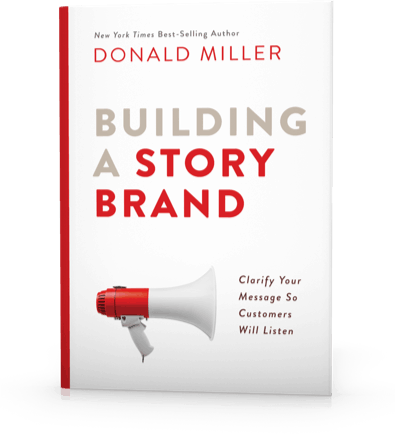
How do you tell your brand story that resonates with customers? Make your customer the hero in your story.
The word “Storytelling” has become a bit of a buzzword in the marketing world. It’s the perfect buzzword because on it’s face it seems relatable and fun (we all love a great story). How do you connect with your audience with a story that actually accomplishes business objectives? When you begin crafting a story, especially with your marketing goals in mind, it quickly gets confusing. What exactly is the plot? Who’s the bad guy? When does the climax happen? How do we show a character arc in an accounting software video?
We’ve been experimenting with Donald Millers’ StoryBrand Framework to help us build better stories for our clients. It’s a simple exercise that will help take a complex company offering and boil it down to a story that centers around your customers. The first principle of the Story Brand framework is: “Your customer is the hero. Not your brand.”
The Hero’s Journey is an ancient story structure first popularized by Joseph Campbell’s book The Hero With A Thousand Faces (1949). Since then, This structure has been remixed, rebooted and regurgitated by dozens of writing experts aiming to help authors and screenwriters construct better stories and films.

There is a growing demand to understand storytelling as it relates to business. Adapting the Hero’s Journey to business communication isn’t a new concept. There are many, many books, articles, lectures and workshops based around business storytelling. The framework in Building a StoryBrand is one of the most elegant and straightforward to implement we’ve seen yet.
Miller lays out the basic framework this way:
- A Character (your customer) – They have a goal, they want something.
- Has a Problem – Various internal and external problems stand in the way of that goal
- And Meets a Guide (your brand) – The guide shows empathy for these problems, as well as authority on the topic.
- Who Gives them a Plan – The guide provides a step-by-step list of actions the hero can take, and promises certain outcomes.
- And Calls them to Action – The guide gives a direct call to action, as well as a transitional call to action the hero can take if not ready for the journey.
- That Ends in Success – The character ultimately gets what they wanted, with the help of the guide.
- And Avoids Failure – The character overcomes the problems, fears and consequences faced in the beginning of the story.
As the story unfolds, your main character (your customer) will experience a transformation. The negative feeling or fear they may have had before using your product or service will be replaced with a positive feeling. This is the character transformation. A character arc. They will go from unsatisfied to satisfied. From unsure to confident. From frustrated to relaxed. From powerless to powerful. This is the vision and result you want your brand, product or service to be associated with.
Why should your main character be the hero of the story? It’s the only way to get them to really care about your message. Deep down, nobody really cares about how long you’ve been in business, the awards you’ve received, or your intentions to become the worldwide leader in whatever. What they care about is themselves, their goals, and how your brand can help them achieve their dreams and live happily ever after.
PS. If you are interested in getting a little help brainstorming a brand story that is customer-centric for your business or nonprofit organization, reach out to me. Even if you aren’t looking to make a video right now, creating your brand story can guide clear messaging across mediums including your website and promotional materials. I’d love to take some time to hear your story and hopefully offer a fresh perspective. Contact me here.
-Carson Coots







